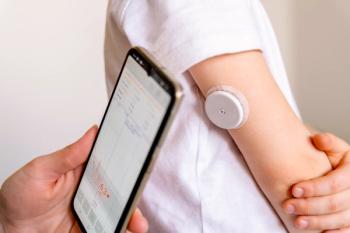
9 Health Care Innovations That Will Raise an Eyebrow
The demand for innovation is not slowing down.
In the past 20 years, there have been a staggering number of new medical devices and health care innovations that have helped to improve human health. From robotic surgical systems to Fitbits, these medical advances leverage cutting-edge technology to help us manage our health and prevent, detect and treat a variety of illnesses.
The demand for health care innovation is showing no sign of slowing. Technology is becoming ever-more advanced and medical researchers are becoming more adept at using it in unexpected ways. Here are 9 health care innovations that need to be on your radar:
- Breast cancer detection in a bra.
Inspired by his mother’s ongoing battle with breast cancer, 18-year-old Julian Rios Cantu of Mexico collaborated with 3 friends to develop a bra that can detect breast changes that may signal the onset of cancer. The bra, known as EVA, was developed by Rios Cantu’s company, Higia Technologies, and won him the top prize at the Global Student Entrepreneur Awards.
The bra uses 200 biosensors to monitor changes in breast temperature, shape, and weight. Information collected by these biosensors is then sent to an application or a computer. The bra only needs to be worn for 1 hour a week to be beneficial.
- Sperm for drug delivery.
Researchers at the Institute for Integrative Nanosciences in Germany have created a drug delivery system that uses sperm to carry medicine to specific locations within the female reproductive tract. This approach is designed to treat conditions such as gynecological cancer, endometriosis, and pelvic inflammatory disease.
After soaking the sperm in the medicine, the sperm are forced into harnesses that are coated in iron and steered to the desired location using an external magnetic field. Test results show that although the harness slows sperm down, the sperm are still able to enter cancer cells. Although there are many questions that remain about how this delivery method can be applied outside the lab, we are sure to hear more about alternative drug delivery systems in the future.
- Gene editing to eliminate disease.
Researchers at the Lewis Katz School of Medicine at Temple University and the University of Pittsburgh have shown that they can remove
Using CRISPR/Cas9 gene editing technology, this study demonstrates that HIV-1 replication can be stopped and the virus can be eliminated from infected cells.
- Biosensors in contact lenses.
Transparent, highly sensitive biosensors in contact lenses can use teardrops to continually monitor blood glucose levels, according to a professor at Oregon State University. Continuous monitoring of blood glucose levels is more effective than the prick-and-test method currently used by many patients with
As the technology is further explored and developed, multiple biosensors that each measure a different bodily function could be embedded into a contact lens and transmit vital health information smartphones or Wi-Fi/Bluetooth enabled devices.
- Mapping DNA changes to detect cancer.
Using nanotechnology, biology and computer science, researchers at the University of Illinois have developed a method to detect methylations, which can be early signs of cancer. By punching a tiny hole in a sheet of graphene or another material that can conduct electricity, researches are able to use electric current while threading DNA through the hole to detect separate methylations.
One important thing to note is that this discovery was made using a simulation, which promotes the use of simulated environments to solve complex medical problems.
- Building better batteries.
Health care wearables such as Fitbits are all the rage for fitness and fashion, but new battery technology would create a new range of possibilities for wearables that could better monitor bodily functions or deliver medication. Australian researchers have used magnesium and plastic electrolyte inside layers of silk—all non-toxic, biodegradable materials—to create batteries that dissolve after 45 days of use.
The battery’s decomposition can be made longer by adding additional layers of silk to the outside, opening the door to advances in temporary medical bionics powered by batteries that eventually would be absorbed into the body.
- AI for predicting heart attacks.
A sophisticated AI system analyzed more than 378,000 electronic medical records to find patterns that might predict cardiovascular events. As a result of its analysis, the AI correctly predicted 7.6% more events than the standard prediction method used by phyisicans. The AI also raised fewer false alarms.
As the population’s demand for healthcare services increases, doctors can incorporate machine-learning methods into the medical practices to assist them in accurately identifying patients who are at high risk of having a life-threatening medical event.
- AI for detecting autism in infants.
A new algorithm created by researchers at the University of North Carolina can detect changes in the brain function of 6-month-old babies that predicts if the child will later develop autism. The study presented no false positives—all the children who were predicted to develop autism later developed the condition.
As this technology continues to evolve, scientists believe that it may be possible to include data on behavioral testing and environmental exposures with brain scan results to develop a highly sensitive, accurate test to diagnose autism at an earlier age.
- Designer viruses target cancer.
Swiss scientists have created artificial, or “designer,” viruses that can be used to stimulate the body’s immune system to fight cancer. Because cancer cells only provoke a limited reaction from the immune system, cancer can grow without much immune resistance.
Current cancer treatment methodologies can be ineffective at treating certain types of cancer. By provoking an intense immune reaction, the body’s natural defenses can be employed to eradicate or slow the growth of cancer cells.
Scientists are finding new ways to treat disease every day. As these innovations become more fully developed and begin to make their way into the health care marketplace, pharmacists will need to learn about and embrace them in order to take the best care of their patients.
Newsletter
Stay informed on drug updates, treatment guidelines, and pharmacy practice trends—subscribe to Pharmacy Times for weekly clinical insights.




















































































































































































































